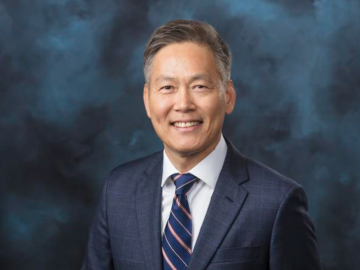
Filter News
Area of Research
- (-) Materials (125)
- (-) National Security (28)
- Advanced Manufacturing (23)
- Biological Systems (1)
- Biology and Environment (35)
- Building Technologies (1)
- Clean Energy (138)
- Computational Biology (2)
- Computational Engineering (1)
- Computer Science (3)
- Electricity and Smart Grid (3)
- Functional Materials for Energy (2)
- Fusion and Fission (9)
- Fusion Energy (2)
- Isotope Development and Production (1)
- Isotopes (27)
- Materials Characterization (2)
- Materials for Computing (15)
- Materials Under Extremes (1)
- Neutron Science (40)
- Nuclear Science and Technology (15)
- Quantum information Science (2)
- Sensors and Controls (1)
- Supercomputing (53)
News Topics
- (-) 3-D Printing/Advanced Manufacturing (25)
- (-) Biomedical (8)
- (-) Cybersecurity (21)
- (-) Grid (11)
- (-) Isotopes (13)
- (-) Materials (74)
- (-) Physics (29)
- (-) Space Exploration (2)
- Advanced Reactors (5)
- Artificial Intelligence (21)
- Big Data (7)
- Bioenergy (14)
- Biology (8)
- Biotechnology (1)
- Buildings (6)
- Chemical Sciences (32)
- Clean Water (3)
- Climate Change (9)
- Composites (9)
- Computer Science (33)
- Coronavirus (6)
- Critical Materials (13)
- Decarbonization (9)
- Energy Storage (35)
- Environment (20)
- Exascale Computing (2)
- Frontier (3)
- Fusion (8)
- High-Performance Computing (8)
- Irradiation (1)
- ITER (1)
- Machine Learning (16)
- Materials Science (78)
- Mathematics (1)
- Microscopy (27)
- Molten Salt (3)
- Nanotechnology (39)
- National Security (34)
- Net Zero (1)
- Neutron Science (35)
- Nuclear Energy (21)
- Partnerships (14)
- Polymers (17)
- Quantum Computing (3)
- Quantum Science (12)
- Renewable Energy (1)
- Security (11)
- Simulation (2)
- Summit (4)
- Sustainable Energy (16)
- Transformational Challenge Reactor (3)
- Transportation (16)
Media Contacts

Ho Nyung Lee, a condensed matter physicist at the Department of Energy’s Oak Ridge National Laboratory, has been elected a Fellow of the Materials Research Society.

A series of new classes at Pellissippi State Community College will offer students a new career path — and a national laboratory a pipeline of workers who have the skills needed for its own rapidly growing programs.

The old photos show her casually writing data in a logbook with stacks of lead bricks nearby, or sealing a vacuum chamber with a wrench. ORNL researcher Frances Pleasonton was instrumental in some of the earliest explorations of the properties of the neutron as the X-10 Site was finding its postwar footing as a research lab.

A technology developed at ORNL and used by the U.S. Naval Information Warfare Systems Command, or NAVWAR, to test the capabilities of commercial security tools has been licensed to cybersecurity firm Penguin Mustache to create its Evasive.ai platform. The company was founded by the technology’s creator, former ORNL scientist Jared M. Smith, and his business partner, entrepreneur Brandon Bruce.

Alice Perrin is passionate about scientific research, but also beans — as in legumes.

For nearly six years, the Majorana Demonstrator quietly listened to the universe. Nearly a mile underground at the Sanford Underground Research Facility, or SURF, in Lead, South Dakota, the experiment collected data that could answer one of the most perplexing questions in physics: Why is the universe filled with something instead of nothing?

Warming a crystal of the mineral fresnoite, ORNL scientists discovered that excitations called phasons carried heat three times farther and faster than phonons, the excitations that usually carry heat through a material.

When Addis Fuhr was growing up in Bakersfield, California, he enjoyed visiting the mall to gaze at crystals and rocks in the gem store.

Zheng Gai, a senior staff scientist at ORNL’s Center for Nanophase Materials Sciences, has been selected as editor-in-chief of the Spin Crossover and Spintronics section of Magnetochemistry.

U2opia Technology, a consortium of technology and administrative executives with extensive experience in both industry and defense, has exclusively licensed two technologies from ORNL that offer a new method for advanced cybersecurity monitoring in real time.


